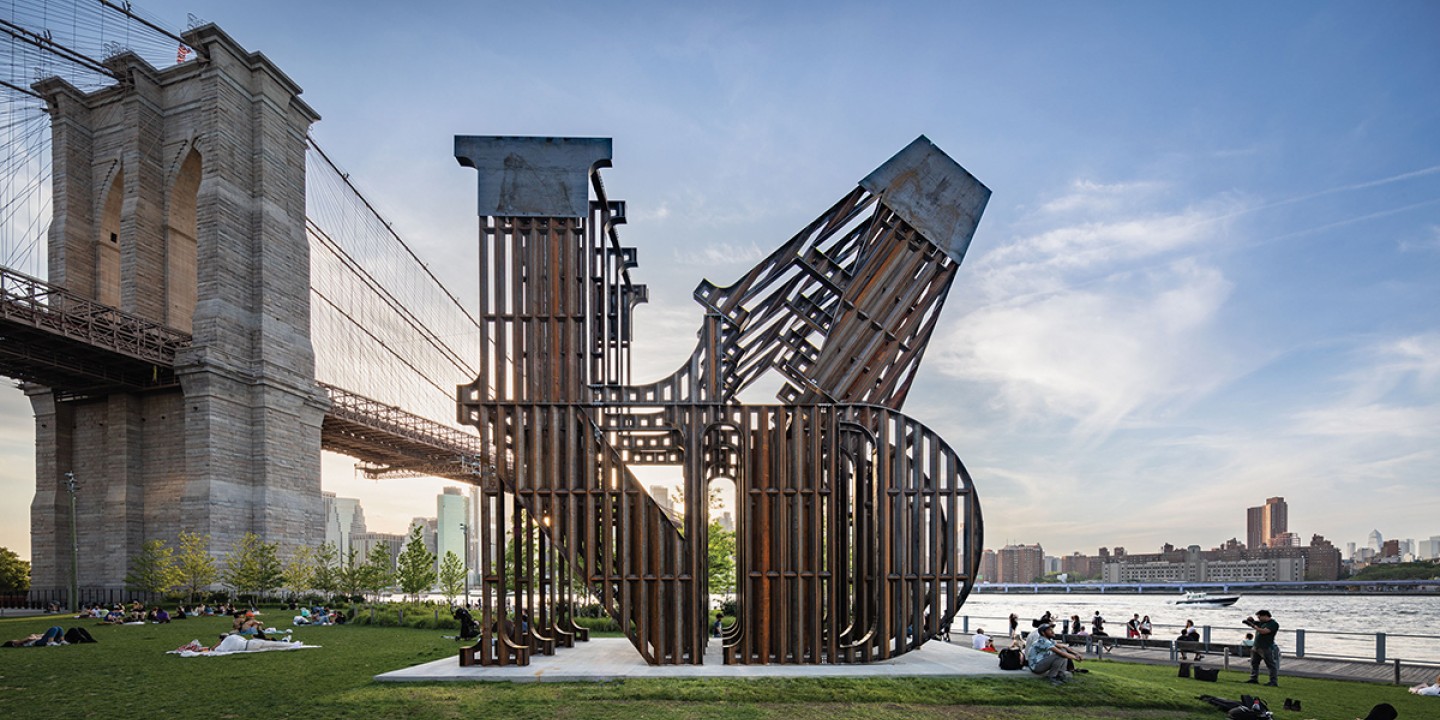Nicholas Galanin’s In every language there is Land / En cada lengua hay una Tierra

(Courtesy of the artist and Peter Blum Gallery | Photos: Nicholas Knight, courtesy Public Art Fund)
Nicholas Galanin, a member of the Sitka Tribe of Alaska, explores in his art practice life’s movement and its profound ties to land. His work transcends, subverts, and permeates boundaries while contesting oppressive systems. A celebrated Lingít and Unangax̂ artist, Galanin amplifies Indigenous narratives through his arresting art, challenging non-Indigenous domination and revealing our interconnectedness to each other, land, community, and the future.
His latest work is a massive steel sculpture, standing tall at Brooklyn Bridge Park in Brooklyn until March 10, 2024. In every language there is Land / En cada lengua hay una Tierra sends semiotic waves across the land, unearthing the interdependence of peoples, cultures, languages, waterways, and tierra. Constructed with the same material and scale as the US-Mexico border wall, the sculpture spells “land” in a fashion that recalls Robert Indiana’s well-known Love images. To construct the 30-foot-tall structure, the artist diverted steel that was en route to building the border wall, momentarily interrupting the wall’s construction.
Galanin exposes the way such territorial demarcations depend on the constant dispossession of Indigenous peoples, lands, waterways, and ways of knowing. “The work is about language and land,” he told the Art Newspaper, “so specifically this title utilises English and Spanish, the two colonial languages on either side of the US-Mexico border.”
By using the very material intended for division and exclusion, Galanin’s piece invites us to reflect on our complicity with such systems of colonial, environmental, and epistemic violence. To the artist, Indigenous relationship to land defies the logic of separation and domination because it “embodies a deep respect for life beyond any single generation,” as he says in an artist’s statement. It “questions barriers to Land, which directly reflect barriers to love, love for Land, community, and future generations.”




